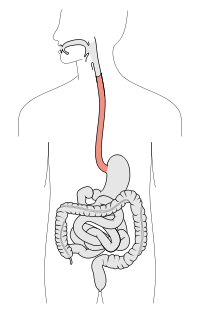
Anal Sphincters Evaluation by Endoanal Ultrasound in Obstructed Defecation
Sign Up to like & getrecommendations! Published in 2017 at "Journal of Ultrasound in Medicine"
DOI: 10.1002/jum.14300
Abstract: To evaluate anal sphincter abnormalities detected by endoanal ultrasound in obstructed defecation due to rectocele and rectal intussusception. read more here.
Keywords: obstructed defecation; endoanal ultrasound; anal sphincters; ultrasound obstructed ... See more keywords

Anal Sphincter Length as Determined by 3‐Dimensional Endoanal Ultrasound and Anal Manometry
Sign Up to like & getrecommendations! Published in 2020 at "Journal of Ultrasound in Medicine"
DOI: 10.1002/jum.15407
Abstract: The normal female external anal sphincter (EAS) is shorter anteriorly than laterally and posteriorly. Furthermore, the thickness of the very proximal part of the circular EAS is thinner than 50% of the lateral and posterior… read more here.
Keywords: sphincter length; anal sphincter; sphincter; dimensional endoanal ... See more keywords

Postoperative three-dimensional endoanal ultrasound findings and relation to anal fistula plug failure.
Sign Up to like & getrecommendations! Published in 2023 at "Scandinavian journal of gastroenterology"
DOI: 10.1080/00365521.2023.2212310
Abstract: OBJECTIVES To explore the utilization of three-dimensional (3D) endoanal ultrasound (EAUS) for the follow-up of the anal fistula plug (AFP), describe morphological findings in postoperative 3D EAUS, and evaluate if postoperative 3D EAUS combined with… read more here.
Keywords: fistula; anal fistula; failure; endoanal ultrasound ... See more keywords

Anorectal dysfunction after radical cystectomy for bladder cancer
Sign Up to like & getrecommendations! Published in 2022 at "Scandinavian Journal of Urology"
DOI: 10.1080/21681805.2021.2025423
Abstract: Abstract Objective: To prospectively assess anorectal dysfunction using patient-reported outcomes using validated questionnaires, manovolumetry and endoanal ultrasound before and 12 months after RC. Patients and methods: From 2014 to 2019, we prospectively included 44 patients scheduled… read more here.
Keywords: patient reported; endoanal ultrasound; dysfunction; incontinence ... See more keywords

Combined 3D Endoanal Ultrasound and Transperineal Ultrasound Improves the Detection of Anal Sphincter Defects
Sign Up to like & getrecommendations! Published in 2023 at "Diagnostics"
DOI: 10.3390/diagnostics13040682
Abstract: Introduction: Anal sphincter injury, mainly due to obstetric or iatrogenic etiology, is the most common cause of fecal incontinence (FI). Three-dimensional endoanal ultrasound (3D EAUS) is used for assessment of the integrity and the degree… read more here.
Keywords: sphincter; anal sphincter; endoanal ultrasound; transperineal ultrasound ... See more keywords